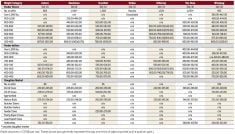Efforts to get Japan to reopen its borders to Canadian beef less than 30 months of age “are proceeding well,” says Pierre Lemieux.
“They are assuring us that progress is being made, that work is underway and there is certainly a good spirit of willingness and co-operation,” said Lemieux, parliamentary secretary to the minister of agriculture.
However, Japan has not said when it will decide the issue.
Full access could generate as much as $160 million in sales in the first year, the Canadian Cattlemen’s Association has estimated.
Read Also

Manitoba Ag Days plans star-studded speaker lineup
Dragons’ Den panellist Arlene Dickinson among speaker series highlight for 2026 Manitoba Ag Days in Brandon, alongside slate of agriculture experts.
Japan restricts imports of Canadian beef to less than 21 months over fears older animals could be contaminated with bovine spongiform encephalopathy (BSE). Often referred to as “mad cow disease,” the fatal neurodegenerative disease takes at least 30 months to show up in infected animals.
Canada was the first country to resume imports of Japanese farm goods following its tsunami more than a year ago, based on “sound science,” Lemieux said.
“This is an explanation we have made with the Japanese in asking them to use sound science in reviewing the way in which they import Canadian beef,” he said.
Japan is Canada’s second-largest agriculture market, and worth almost $4 billion to Canadian farmers and food processors.
“We know there is room for more growth,” Lemieux said.
Fifty to 85 per cent of Canadian farmers’ sales come from exports, he added.
“When farmers succeed our entire economy grows with new jobs and new opportunity, and that’s why our government will continue to help farmers meet the growing demand for our safe, high-quality food.”
While in Japan last month to promote Canadian agricultural goods, Lemieux also reassured the world’s second-biggest importer of farm products that Canada will continue to supply it with high-quality wheat after the Canadian Wheat Board loses its monopoly on western Canadian wheat exports Aug. 1.
“I stressed with our customers that the quality of our Canadian wheat is inspected and assured by the Canadian Grain Commission, which operates independently of the Canadian Wheat Board,” he said.















